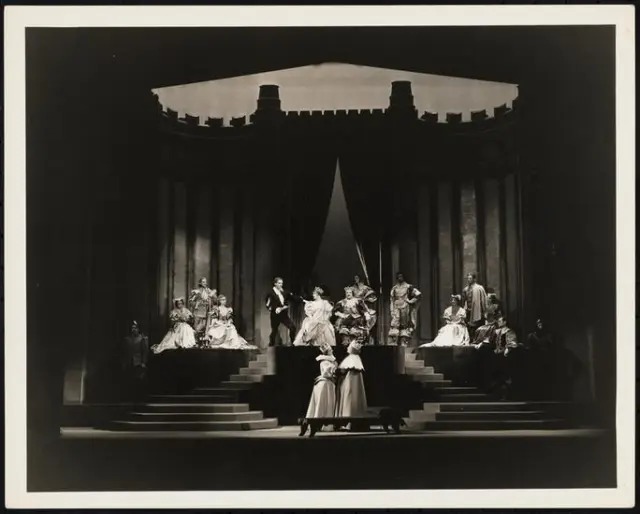
An Examination of the Phenomenon of Reality on Love, Loyalty and Relations: The Real Things by Tom Stoppard
An Examination of the Phenomenon of Reality on Love, Loyalty and Relations: The Real Things by Tom Stoppard
The subjects of Tom Stoppard's theatre are familiar to much of contemporary literature. He writes of the anxiety and confusion of life, of the helplessness of the individual caught up in forces impervious to reason, of the loss of identity and faith (Robinson, 1977, p. 37). He drew on sociological issues and addressed the events that occurred in society within a postmodern framework. The nakedness of postmodern art, undoubtedly, brought to the stage to shed light on social issues and discussed what was happening in society and these events from the perspectives of the characters on stage. "The Real" is essentially a play about love, but Stoppard's theatrical route towards the theme is to place a playwright who cannot write about love at the center. While expressing different attitudes and behaviors about love, loyalty and relations, Stoppard does not allow a single dominant view to be established in the play or the audience. This essay explains the concept of reality in Tom Stoppard's play "The Real Things" through themes.
Initially, as mentioned before love is not central theme in The Real Things. However, love and reality can be combined as prominent notion because there are many works written about love, but is love real? At this point, Stoppard brings this concept to the stage. Love appears as an idealized theme. Especially in the play, the audience goes back and forth between reality and fiction with the play technique. The use of the methodological technique drags the play into the real or imaginary complexity of real love, but the main thing to emphasize here is that real love is not perfect but sincere. For example, the opening scene of the play begins with the scene of Max and Charlotte, this scene between Max and Charlotte actually feels like part of the game. However, this play is blended with the play within the play technique and presented to the audience (Koçak and Demir, 2023, p. 271). Later, it is revealed that this play was created by Henry's pen. The main purpose of using this technique by Tom Stoppard is to make the audience think not only about the play but also about the characters. Post-modern literature's clarification of social issues is to take this one step higher, and thus the concept of love mentioned is presented to the player in an idealized form.
The theme of loyalty is the cornerstone of almost all relationships. This theme is also present in Romeo and Juliet, where drama is integrated with love and is one of the cornerstones of drama. “My bounty is as boundless as the sea, my love as deep; the more I give to thee, the more I have, for both are infinite.” (Shakespeare, p. 2.2. 140-142). The theme of loyalty is handled differently by Tom Stoppard, unlike Romeo and Juliet. The characters of Henry and Annie come to the fore especially at this point. According to Henry's perspective, loyalty is evaluated as the final stage of reaching maturity. According to him, loyalty ends when Annie learns about her feelings for someone else. However, Annie's understanding of loyalty has an emotional and intellectual side as well as a personal one. When considered in this context, loyalty is interpreted differently by these characters. Although it is interpreted differently, loyalty consists of choices and Annie uses her choices in different ways. However, according to Stoppard, love is not only a commitment and love. It emphasizes that it is a whole of struggle and individual wars. However, it is a harsh criticism that especially in the post-modern period, people have degenerated in terms of their relationships and that these relationships are far from reality and artificial, just like Annie's attitude.
Finally, the fact blended with “reality” is about relationships. Love and solidarity between people will eventually disappear. From now on, the ties that bind us together will also break down day by day, and all their values will rot completely. What will remain will be a vile, fake relationship born of certain interests. There will be nothing left but the animalistic closeness that people who look at each other while sitting on the bus or walking on the road can establish - if they can establish it. All the others will want to drown in a swamp, in an ocean of fake relationships and escape - even if it means kicking and throwing the people next to them into the swamp or killing them so that they don't reach the branch they are holding on to and break it. This disgusting life requires this. When considered in the context of this play, these are Annie's countless and absurd relationships. Absurdism is the basic building block of this play. This also supports the relationships Annie has experienced. To clarify this point, Annie and Billy's flirtation and Henry's insecurity are about how the previously explained love and loyalty are displayed in these relationships, so love and loyalty consist of relationships based on personal interests. Tom Stoppard has clearly summarized postmodern relationships here and successfully brought the fakeness of today's relationships, which are far from reality, to the stage.
As a result, it is not possible to limit the complex and layered structure of the reality phenomenon that Tom Stoppard mentions in the title of the work to only 3 themes. However, since love, loyalty and relationships are far from reality, the fact that he handles it with an absurd and ironic pen explains the human characteristics of this period. When considered in this context, love is a lie left from Adam and Eve, Loyalty cannot be expected from a nightingale; because it always sings on a different rose. These two words are the reality that is the basis of relationships, but unfortunately, this reality is like a collapsed building in the play. Somebody cannot live in a collapsed building. As in this metaphor, there is no love and loyalty in the basis of unreal and artificial relationships, and like a collapsed house, it is not standing.
References
BIGSBY, C. W. E. (1976). Tom Stoppard. Liverpool University Press. https://doi.org/10.2307/jj.3078993
Shakespeare, W. (2000). Romeo and Juliet (Ed. Cedric Watts). Hertfordshire: Wordsworth Classics.
Koçak, K. & Cihan Demir, H. Z. (2023). Postmodern elements in Tom Stoppard’s The Real Inspector Hound and Ferhan Şensoy’s Fişne Pahçesu: A comparison. İnönü Üniversitesi Uluslararası Sosyal Bilimler Dergisi (INIJOSS), 12(2), 257-274.
Yorumlar

